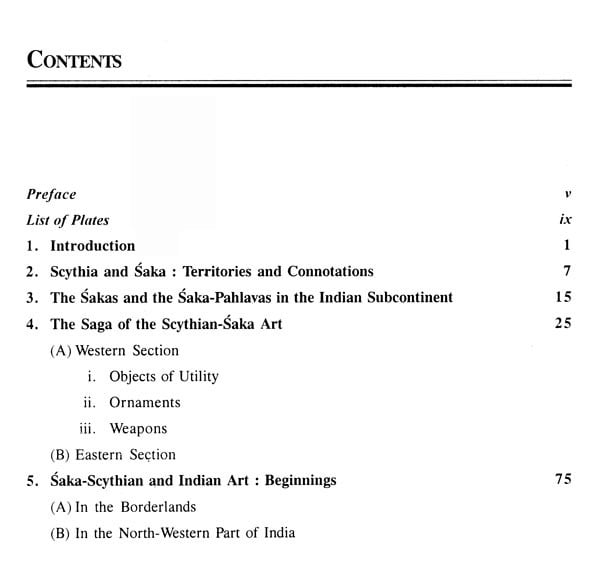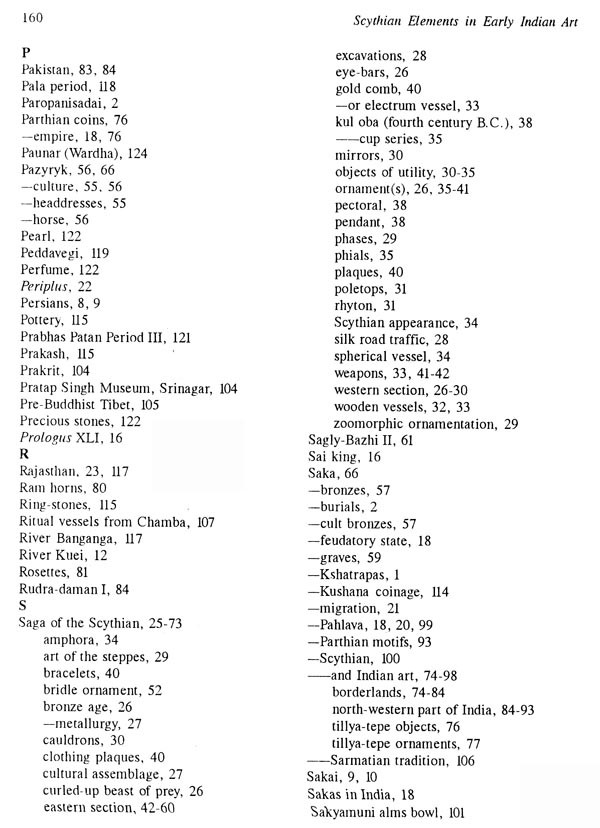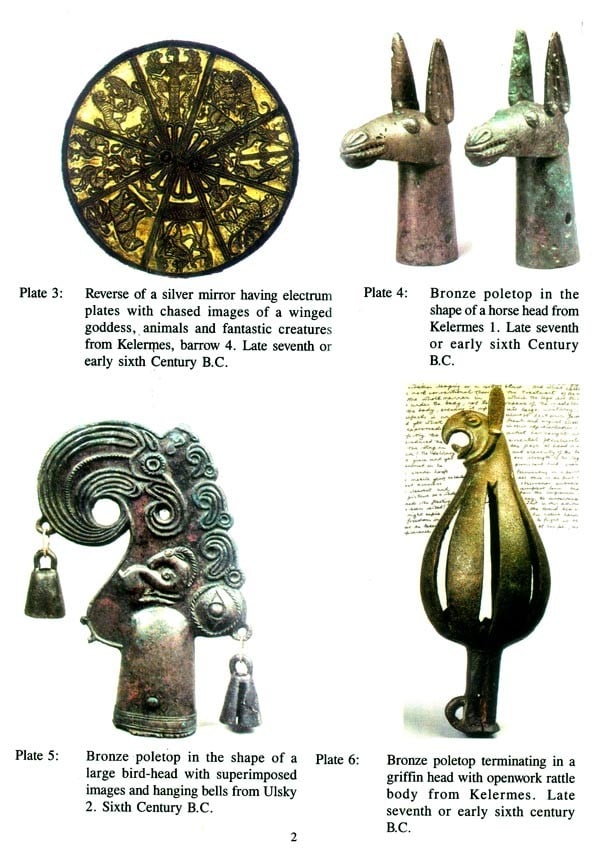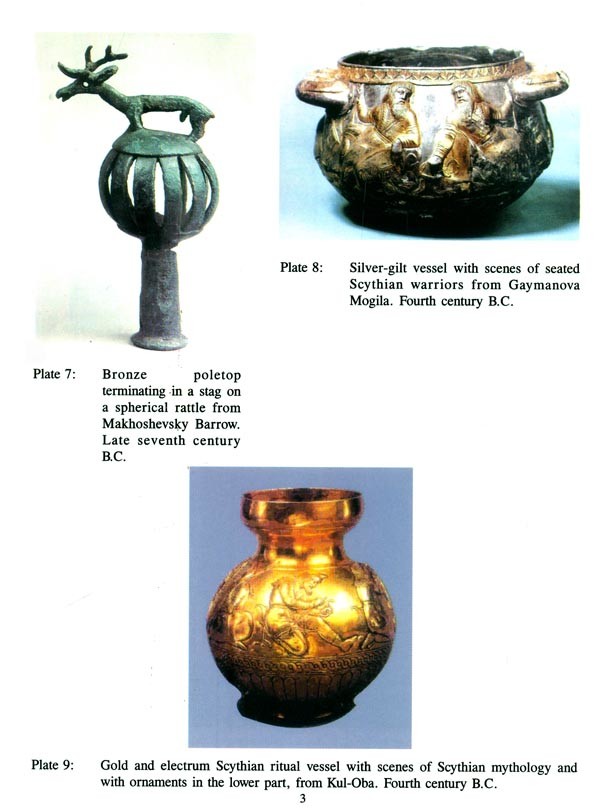About the Book The study and research of the history of Indian-art and foreign influence on it, being a subject of absorbing interest, started receiving the special attention of scholars and art historians from about the beginning of the nineteenth century. The presence of the Sakas in early India is well-known to scholars. It is also known that the Sakas were a part of the Scythians. The term Scythian is generally employed to denote numerous groups of nomadic tribes from the borders of China to the Carpathians. Also, the Scythians constituted a subdivision within the larger group of Scytho-Siberian early nomads inhabiting the Eurasian steppes and forest steppe zones during the first millennium B.C. "Scythian Elements in Early Indian Art" ascertains the importance of the Saka/Scythian elements in the formation of the composite and rich nature of indian culture.
The importance of the Scythian/Saka power in the annals of the ancient Orient is apparently clear from the numerous widely known sources (both literary and archaeological) alluding to them. In the present work, all relevant sources, both archaeological and literary, have been taken into account. The Asian connections of the Scythian culture, which were formerly not easily traceable, are now studied with fresh perspectives as revealed by new archaeological data.
About the Author Swati Ray, Ph.D (b.1964) did her M.A. with distinction. She teaches also in the Department of Museology, University of Calcutta as a guest lecturer. She was a Research Fellow at the Asiatic Society, Kolkata, prior to her joining the University. Dr. Ray's command over French, Russian and Spanish is considerable. An accomplished pianist, she has been certified by The Royal School of Music, London.
Presently, Dr. Ray is teaching in the Department of Ancient Indian History and Culture, University of Calcutta, Kolkata.
Preface I have tried to bring back the Saka/Scythian art motifs to life as integral part of the ancient art of the subcontinent and attempted representing art forms without bias. It is impossible for one to know the final truth and other views and methodological obsessions persist. My debt to scholars, art historians and archaeologists will be apparent to every reader. Diacritical markings have been used to a minimum. I have assumed that modern names of towns and cities in Central Asia and the Indian subcontinent are in sufficiently current usage and do not, therefore, require any diacritical definition.
The diacritical marking Saka/Saka has been used only in the Indian context.
I am grateful to my teachers, colleagues and students. I specially thank Prof. Yaroslav Vasilkov of the Institute of Oriental Studies, St. Petersburg, Prof. Guriev, and Prof. J.D. Kimball of the Centre for Eurasian Studies for Nomads, Berkeley, U.S.A. I am equally beholden to Dr. Arundhuti Banerji and Dr. Rupendra Kumar Chattopadhyay. I am also grateful to Dr. Purabi Ray, Surja Sankar Ray and Riddh Sankar Ray.
I wish to thank my family for their active cooperation especially my brothe Dr. Kshounish Sankar Ray, my sister-in-law Dr. Sucharita Ray and my mothe Dr. Jayasree Ray.
Introduction More than 2000 years ago, the presence of the Sakas ruled in early India. India, unless otherwise indicated, denotes the Indian subcontinent comprising the territories of India, Pakistan and Bangladesh. The Sakas had some political dominations in North-West India from circa first century B.C. and, along with the Parthians, they were continually in power in parts of North-Western India, Gujarat, parts of central India and upper western Deccan till the latter part of the second century A.D. The territories of the Saka-Kshatrapas in the western Deccan were eventually incorporated into the mighty Gupta Empire by Chandragupta II (A.D. 376 to A.D. 414) at the end of the fourth century A.D.
**Contents and Sample Pages**
































